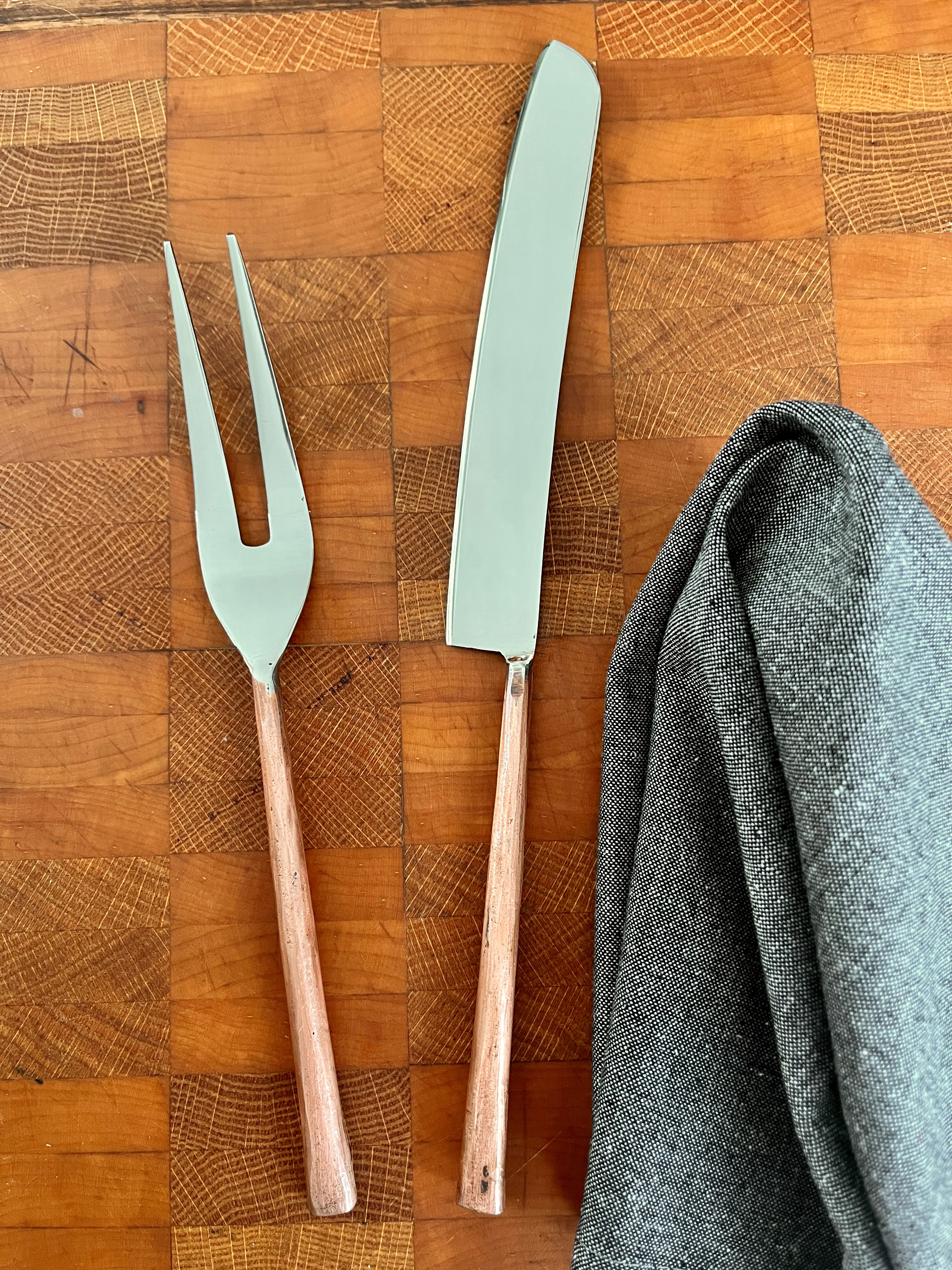
Use and Care
Stainless steel can last a lifetime with proper care as it is much better at resisting stains, rust, and corrosion when compared to silverware and other metals. As a good practice before using them, we recommend cleaning your flatware and kitchenware with hot water and mild soap or detergent. We would love your flatware and kitchenware to last forever for you and below are some dos and don’ts to keep them in prime shape.
Do's
- Use neutral quality dishwashing agents.
- Ensure flatware is dried with a cloth before storing.
- Wash your flatware separately from aluminum, sterling, or silver-plated items as pitting can occur caused by an electrochemical reaction.
- Rotate your flatware so that all pieces maintain a consistency of finish over time.
- Put flatware in dishwasher on TOP rack only properly separated from each other.
- Remove flatware before the hot air cycle of your dishwasher as hot air increases the chances of discoloration and corrosion.
- Store your flatware in a tarnish-proof environment.
Don'ts
- Do not soak flatware for prolonged period.
- Do not use abrasives, steel wool, or scrubbers or POLISHING chemical agents.
- Do not let your flatware and kitchenware sit in the humid atmosphere of the dishwasher for long hours.
- Do not mix Aluminium pots and pans and utensils in the same load.
- Do not scrub your flatware handles with metallic scrubs to avoid erosion
- Do not use heavy-duty or heavily chlorinated powders, liquids, or gels. Also, cleaners containing lemon or orange additives can cause corrosion.
Special Cleaning & Care
Should special cleaning be necessary due to staining or marking, a mildly abrasive, all-purpose quality stainless cleaner will help remove discoloration while maintaining and reviving the beautiful luster of your flatware. You can also use rubbing alcohol or salad oil to clean stubborn water spots. Shine with a sponge doused in white vinegar. That’s what they do in restaurants to keep their flatware in shape.
